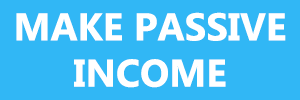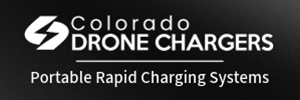You are using an out of date browser. It may not display this or other websites correctly.
You should upgrade or use an alternative browser.
You should upgrade or use an alternative browser.
Dedrone, eh?
- Thread starter Gr8fulTed
- Start date
Divebomber
Well-Known Member
Seems perfectly logical to me. Industrial espionage is a very serious worry for companies like Apple, that have industry-leading products. Their new campus and building is quite open, with lots of windows. Perhaps a toy drone couldn't get much info, but there are very sophisticated ways to glean information through glass, as well as sniff the air for electronic data. A drone designed for information gathering could probably get a lot of information. There are any number of ways to implement countermeasures, the easiest of which would be to aim a low-power EMP (Electromagnetic Pulse) device at a drone. The technology is not new, and is basically a microwave "gun" that scrambles any circuits its microwaves come in contact with. High powered devices like this are already in use on the battlefield, to scramble the guidance systems of incoming missiles. Of course, this makes the drone drop out of the sky, which may cause problems for unsuspecting people or otherwise on the ground when it impacts. The more "civilized" and less litigious way to manage the situation is to be able to take control of the drone and bring it down under control. Because each maker's drone uses different software to control it, this might be a significantly complicated task. What I would guess would be the first step, at least for DJI type drones that will not enter no fly zones, is to make the area around Apple's campus a no fly zone. This will take some wrangling with the FAA and the city, but there's plenty of people at Apple that could get on this task and get it done pretty quickly.
swooshdave
Well-Known Member
Divebomber
Well-Known Member
That's definitely true, but NFZ's, SFR zones and MEZ's can be designated for use by or denied use by certain types of aircraft. It's done all the time. Apple has HUGE pull and I wouldn't be surprised if they could get something put in place. There's already been one drone that's gone down on the roof of the new Apple building, so there is rationale for doing it, above and beyond the worries about industrial snooping. There is currently a bill going through California legislature, with the blessings of the FAA, and a chance it will go nation wide, that designates all air space below 400' AGL as under the jurisdiction of the state, city, and/or county. If that gets passed, the challenge to getting an NFZ mapped out over a sensitive business will be much easier. I used to work in aerospace on some very sensitive projects. Though the buildings were private businesses, and there truly was nothing you could see from above (the buildings didn't even have windows), there were NFZ's over some of them. Not sure what they were protecting, but there's no figuring out bureaucratic logic. 
swooshdave
Well-Known Member
I don't think Apple has as much pull at the federal level as you think. At the local level a lot more. I work at a, ahem, global company and we don't have a ton of influence at the federal level but the threat to move WHQ is quite the stick at the local (state/city) level.
Divebomber
Well-Known Member
You may very well be right Dave. My theories are based upon unshakeable and inarguable daydreaming. I am an instrument-rated pilot, and my ideas are based partly on my experiences with FAA designated areas. What I would think is that the laws regarding drones are still evolving as we all know, and as usual, the laws and regulations are playing catch up with new technologies. I would guess that once companies begin to be concerned that drones could gather information they don't want gathered, the rules about flying over or near sensitive corporate (or other sites) may tighten up. While most drone operators are completely innocent, there are a few that might not be, and of course we'll all have to toe the line to ward off that tiny percentage. It's already happening, really. When drones first hit the stores, there were some vague rules that were applied from the RC fixed-wing gang, but not much really. As more and more drones hit the sky, then started causing problems, the laws tightened, and will probably continue to do so.
When I worked classified projects, it was well before toy drones were even a twinkle in some engineer's eye. One of the buildings I worked in was shaped like a square donut, with a courtyard in the middle for employees to relax during breaks and lunch. The patio was accessible only from the building, and the building was only accessible through tight security. Even then we were told, and there were signs on the doors leading to the patio reminding us, not to open classified information while on the patio. Something above us might be able to see the documents. There were even schedules posted on the doors of when Soviet satellites were going to be overhead. Of course, we engineers all went out at those times and gave the one-finger salute to the sky. Would have loved to see what the analysts in the Soviet Union thought about that. That's a bit of a side story, but it does make one think what laws might be enacted for drones. Yup. There are already rules about where you can fly, but more will be done so companies can enact immediate remedies if they feel threatened.
That's a bit of a side story, but it does make one think what laws might be enacted for drones. Yup. There are already rules about where you can fly, but more will be done so companies can enact immediate remedies if they feel threatened.
When I worked classified projects, it was well before toy drones were even a twinkle in some engineer's eye. One of the buildings I worked in was shaped like a square donut, with a courtyard in the middle for employees to relax during breaks and lunch. The patio was accessible only from the building, and the building was only accessible through tight security. Even then we were told, and there were signs on the doors leading to the patio reminding us, not to open classified information while on the patio. Something above us might be able to see the documents. There were even schedules posted on the doors of when Soviet satellites were going to be overhead. Of course, we engineers all went out at those times and gave the one-finger salute to the sky. Would have loved to see what the analysts in the Soviet Union thought about that.
I doubt the FAA will get involved with NFZs over private companies or property not involved in national defense. They already don’t like the Disney NFZs as they were not FAA created, but the work of a few bought off congressmen inserted in another bill.
Divebomber
Well-Known Member
That's true to some extent, however, there's a pretty solid history of NFZ's over civilian property. Any sporting event of good size has temporary NFZs. Not germane to the discussion, but an interesting point. Manhattan Island has a permanent NFZ for drones and small aircraft, other than helicopters. San Francisco does too. I'm sure there are other cities, but those are the two I'm aware of. Many cities fall under the Class B airspace regulation (TCA), which is a given NFZ except with specific equipment on board the aircraft, and active radio contact with the tower. Class B are shaped like an upside down wedding cake, with the smaller exclusion zones closer to the ground, but if you look at where the Apple campus is, it does appear to fall within the controlled airspace. The FAA can't track every drone flight, but if something happens that involves a drone, they will get involved. And as a pilot I can tell you that getting a phone call from the FAA is not usually a pleasant experience. It will come down to whether the FAA is willing to slice and dice their NFZ's down to specific buildings. I don't think we've seen the end of the story on this, as regulations are continuing to be imposed. Once lobbyists and advocates for safety and security get involved, our already restricted flight areas will grow even smaller. Best thing to do is not to "poke the bear" as they say. Don't fly near sensitive sites where the landholders are concerned about industrial information shenanigans.I doubt the FAA will get involved with NFZs over private companies or property not involved in national defense. They already don’t like the Disney NFZs as they were not FAA created, but the work of a few bought off congressmen inserted in another bill.
I am also a pilot. The real conundrum comes down to this...you call it poking the bear...I call it using our rights because there are more and more attempts out there to get people to give up their rights voluntarily by not doing things that are perfectly legal, but may upset someone. From speech to drones, restrictions are being imposed, not by law and regulation, but by peer pressure. If we want to keep the rights we have, as in flying over private property in a safe manner, we have to keep doing it. If we 'self-police' and say it's OK, they will eventually make it law because it won't affect anyone anyway because no one is doing it.
What we really need is a lobby made up of drone pilots and manufacturers to defend our rights. Someone to set the record straight on drones and point out that no, that drone 200ft over your house cannot see in the windows. If we don't start fighting back, you are right...the only place you will be able to fly a drone will be a designated RC aircraft park or the middle of the desert. The manufacturers should be scared to death of that because their sales will drop to zero. Time for them to get involved and start funding a pro-drone group to ensure any regulation is actually common sense and actually contributes to safety, not some false emotional view of ignorant people.
What we really need is a lobby made up of drone pilots and manufacturers to defend our rights. Someone to set the record straight on drones and point out that no, that drone 200ft over your house cannot see in the windows. If we don't start fighting back, you are right...the only place you will be able to fly a drone will be a designated RC aircraft park or the middle of the desert. The manufacturers should be scared to death of that because their sales will drop to zero. Time for them to get involved and start funding a pro-drone group to ensure any regulation is actually common sense and actually contributes to safety, not some false emotional view of ignorant people.
Wouldn't;t stop drones. All a recreational flyer has to do is notify them they will be flying. Apple could not lie and claim the Helipad is in use when it isn't without raising the ire of the FAA. 107 pilots don't even have to worry about it because the airspace will not be changed to controlled under 500ft for a Helipad.
Similar threads
- Replies
- 4
- Views
- 2K
- Replies
- 20
- Views
- 2K
- Replies
- 6
- Views
- 464
- Replies
- 0
- Views
- 1K
DJI Drone Deals
New Threads
-
-
-
-
-
Skunk Works and XTEND Partner for Advanced Mission Execution.
- Started by The Droning Company
- Replies: 0











